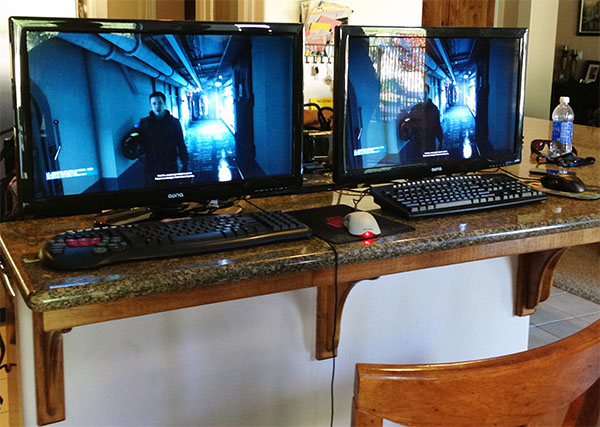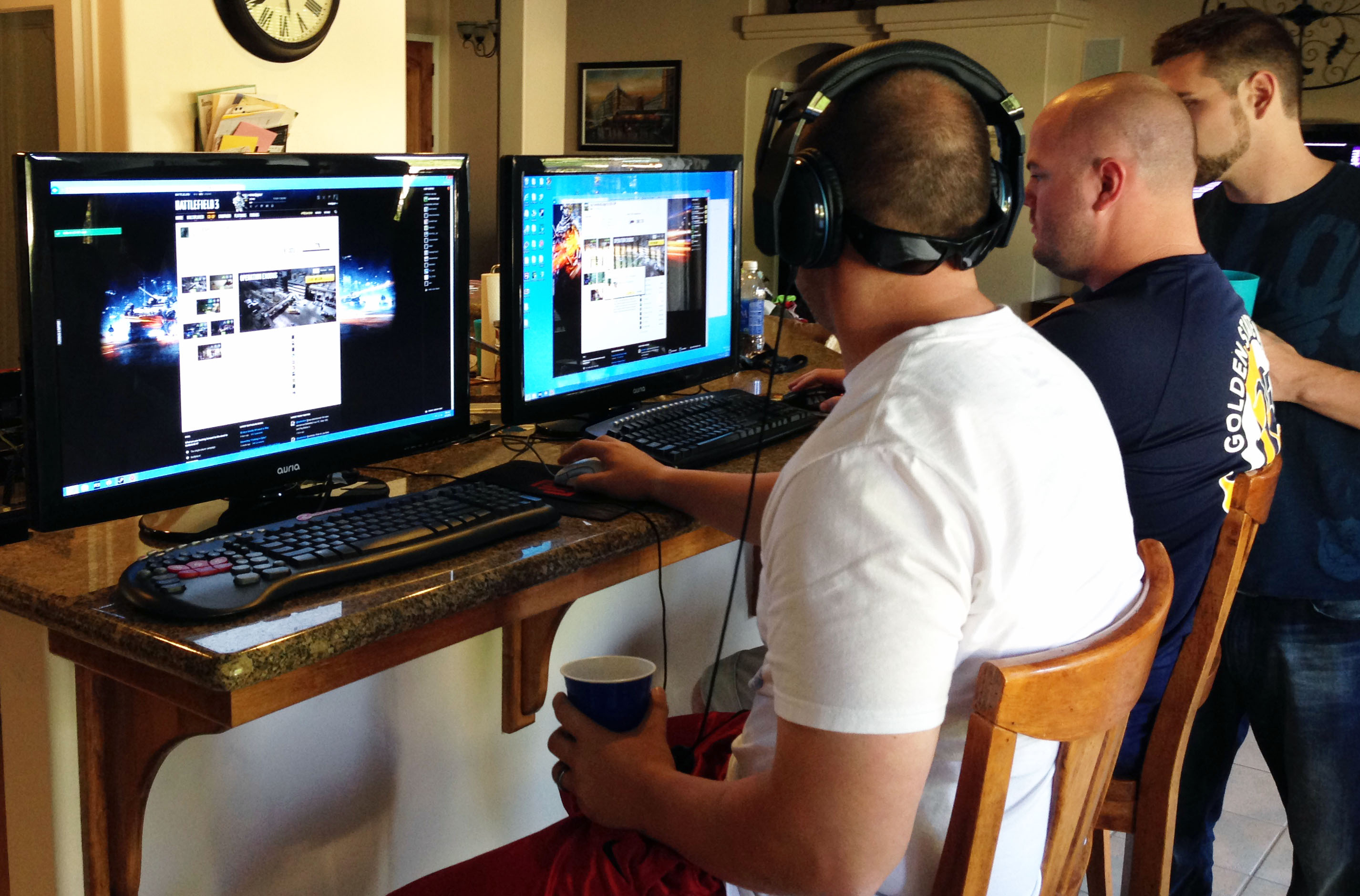AMD Radeon HD 7990: Eight Games And A Beastly Card For $1,000
We've been waiting for this since 2011. AMD is ready to unveil its Radeon HD 7990, featuring a pair of Tahiti graphics processors. Can the dual-slot board capture our hearts with great compute and 3D performance, or does Nvidia walk away with this round?
Radeon HD 7990 Vs. GeForce GTX 690: The Pepsi Challenge
Speaking of the subjective testing that helps us draw more confident conclusions throughout our benchmark analysis…
By rolling FCAT into our regular test suite and phasing Fraps out of multi-card coverage, we have a ton of new quantitative information that presents us with more insight into performance than we’ve ever offered before. In theory, we should be armed with the data to get even more authoritative.
But we’re still missing a vital piece of information: how do real gamers perceive various levels of latency between frames? Are we making a bigger deal about smoothness only because we have the tools to measure it? Is the issue getting overblown in the process?
We’re working on leveraging the audience size of Tom’s Hardware to generate experiential data that’ll go into a story of its own, exploring what gamers think about certain variables based on first-hand play. For this piece, though, I felt it important to bring a select few gamers into my home, where they could try out the Radeon HD 7990 and GeForce GTX 690, one card right after the other, in the same games.

I set two open test beds behind a pair of Auria EQ276W 27” displays. The systems were both running Z77-based motherboards with Ivy Bridge-based Core i7 processors and 16 GB of DDR3-1600 memory. Both featured 256 GB SSDs with identical drive images, too. The test subjects weren’t told which system had which card, or to which test bed their monitor was attached. Though, over the course of seven hours, I did let them know where their opinions were leading us. Each gamer spent between 10 and 15 minutes in front of each screen (I was only able to involve five folks for this; I’d like to at least double that in the future), before switching and repeating.
The Verdict
Unanimously, the entire group identified game play on Nvidia’s GeForce GTX 690 as the smoothest. Although I was worried about group pressures affecting the responses, or any of the other pitfalls associated with subjective analysis, each gamer was asked to identify the factors that affected his judgment, and we received specific answers.
Stay On the Cutting Edge: Get the Tom's Hardware Newsletter
Get Tom's Hardware's best news and in-depth reviews, straight to your inbox.
This could have been done more scientifically, given more time, a larger sample size, and enough matching hardware. But I was satisfied enough with the discussion to include its outcome here.

The bulk of our gaming involved AMD’s Catalyst 13.5 Beta 2 driver. However, I surprised the group by dropping AMD’s special prototype driver onto the Radeon HD 7990-equipped machine. Without telling anyone what the software was supposed to do, I asked them to retry titles they had already played. Again, the response was universal: action on the dual-Tahiti board was noticeably smoother in most games, but seemed intermittently choppy in a couple of others (Crysis 3 and Tomb Raider). This is actually in contention with the benchmarks, which show the frame pacing-optimized software delivering higher practical frame rates in those two titles.
My working hypothesis, after also seeing a couple of titles that looked choppier under the prototype driver (Battlefield 3 is the one I singled out), is this: although deliberately inserting latency helps avoid runts and drops, benefiting the frame rate FCAT measures, it’s not always done precisely enough to prevent perceptible blips in the action. AMD is still working on the driver, though, and it certainly seems to achieve the company’s goal. Skyrim, in particular, elicited a few “whoa, nice” reactions from gamers who previously singled-out the Radeon HD 7990 under Catalyst 13.5 Beta 2.
Current page: Radeon HD 7990 Vs. GeForce GTX 690: The Pepsi Challenge
Prev Page Results: Tomb Raider Next Page Noise Measurements And Fan Speed-
blackmagnum If I had 1,000 dollars... I would buy a Titan. Its power efficiency, drivers and uber-chip goodness is unmatched.Reply -
timw03878 Here's an idea. Take away the 8 games at 40 bucks a piece and deduct that from the insane 1000 price tag.Reply -
donquad2001 this test was 99% useless to the average gamer,Test the card at 1900x1080 like most of us use to get a real ideal of what its like,only your unigine benchmarks helped the average gamer,who cares what any card can do at a resolution we cant use anyway?Reply -
cangelini whysoPower usage?Thats some nice gains from the prototype driver.Power is the one thing I didn't have time for. We already know the 7990 is a 375 W card, while GTX 690 is a 300 W card, though. We also know AMD has Zero Core, which is going to shave off power at idle with one GPU shut off. I'm not expecting any surprises on power that those specs and technologies don't already insinuate.Reply -
cangelini donquad2001this test was 99% useless to the average gamer,Test the card at 1900x1080 like most of us use to get a real ideal of what its like,only your unigine benchmarks helped the average gamer,who cares what any card can do at a resolution we cant use anyway?If you're looking to game at 1920x1080, I can save you a ton of money by recommending something less than half as expensive. This card is for folks playing at 2560 *at least.* Next time, I'm looking to get FCAT running on a 7680x1440 array ;)Reply -
hero1 Nice article. I was hopping that they would have addressed the whining but they haven't and that's a shame. Performance wise it can be matched by GTX 680 SLI and GTX 690 without the huge time variance and runt frames. Let's hope they fix their whining issue and FPS without forcing users to turn on V-sync. For now I know where my money is going consider that I have dealt with AMD before:XFX and Sapphire and didn't like the results (whining, artifacts, XF stops working etc). Sorry but I gave the red team a try and I will stick with Nvidia until AMD can prove that they have fixed their issues.Reply
